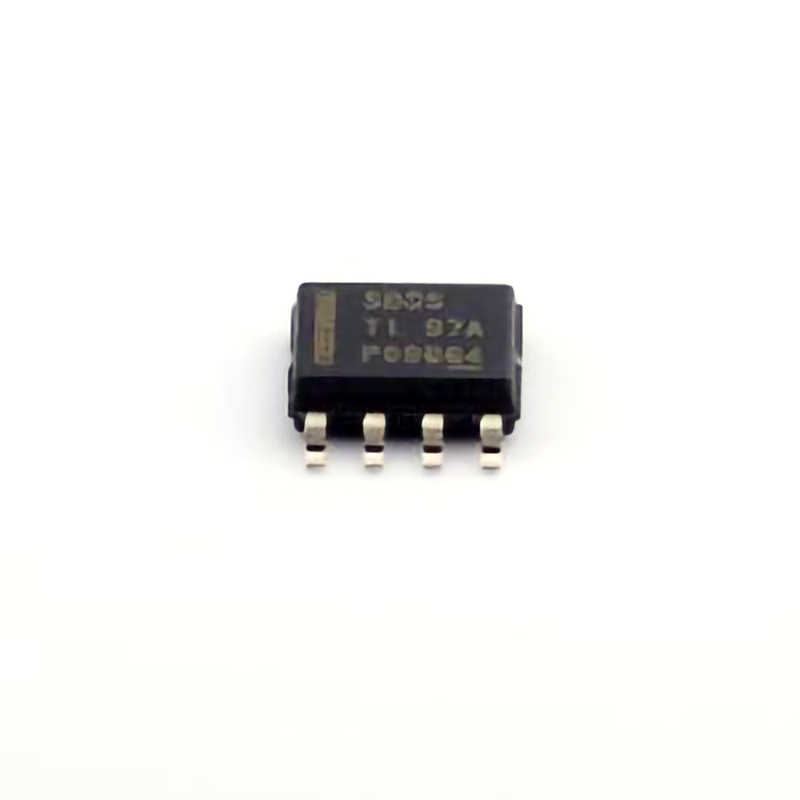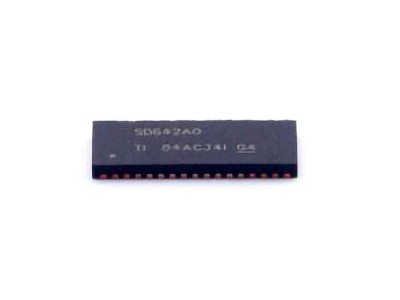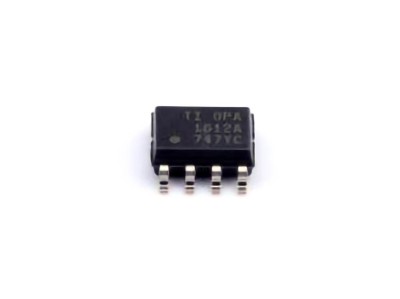
The LMR16030SDDAR is a highly efficient and versatile buck regulator IC designed for a wide range of applications. This article explores the application and design techniques of the LMR16030SDDAR in high-efficiency buck regulator circuits, shedding light on its advantages, features, and best practices for implementing it in Power Management systems.
Introduction to the LMR16030SDDAR and its Role in High-Efficiency Power Conversion
In modern electronic designs, power efficiency is paramount. Designers and engineers constantly seek components that reduce power loss, improve Thermal Management , and enhance overall system performance. One such component is the LMR16030SDDAR, a high-efficiency synchronous buck regulator designed to meet the ever-increasing demands for energy-efficient power supplies. This device is a favorite in a range of applications, from industrial systems to portable electronics, due to its compact size, ease of use, and ability to deliver high efficiency.
The LMR16030SDDAR is a DC-DC buck converter that steps down higher input voltages (up to 60V) to lower, regulated output voltages with a high degree of efficiency—up to 96%. The IC integrates a wide input voltage range, providing designers with flexibility and enabling robust designs even in environments with fluctuating input voltages. With such features, it stands as an ideal candidate for a range of power management applications.
Key Features of the LMR16030SDDAR
High Efficiency: The LMR16030SDDAR boasts an efficiency of up to 96%, which is significantly higher than linear regulators, making it ideal for systems requiring long battery life or minimal heat generation.
Wide Input Voltage Range: The device operates over an input voltage range from 4.5V to 60V, making it suitable for automotive, industrial, and communication systems that experience significant voltage fluctuations.
Adjustable Output: The output voltage is adjustable, offering versatility in various applications. The output range spans from 0.8V to 15V, providing flexibility for multiple use cases.
Compact Size: The IC comes in a small package (8-pin SOIC), which is a space-saver in designs where real estate is critical, such as handheld devices and compact electronic systems.
Low Quiescent Current: It has a low quiescent current (typically 60μA), ensuring low power consumption during idle operation, which is crucial for battery-powered applications.
Integrated Components: The LMR16030SDDAR integrates both the switching MOSFETs and the controller in one package, minimizing the need for external components and reducing design complexity.
Understanding Buck Regulators
A buck converter is a type of switching regulator that steps down an input voltage to a lower output voltage with high efficiency. Unlike linear regulators, which dissipate excess voltage as heat, buck converters use inductors and capacitor s to store and release energy efficiently, resulting in less heat generation and higher efficiency.
In a buck converter, the core components are:
Inductor: Stores energy when current flows through it and releases energy when the switch is off.
Capacitor: Smooths the output voltage by filtering the ripples.
Switch: Controls the flow of current and regulates the output voltage.
The LMR16030SDDAR integrates the key functions of these components, offering a fully integrated solution that reduces the need for external parts.
Applications of the LMR16030SDDAR
The versatility of the LMR16030SDDAR makes it applicable to a wide range of industries. Some common applications include:
Automotive Systems: With an input range up to 60V, the LMR16030SDDAR is well-suited for automotive applications where input voltages may vary due to battery fluctuations or alternator load.
Portable Devices: For battery-powered systems, such as handheld devices and sensors, the efficiency and low quiescent current of the LMR16030SDDAR ensure longer operation and less heat generation.
Industrial Equipment: High-power industrial systems benefit from the IC’s ability to handle high input voltages and provide stable, efficient output voltages.
The combination of its wide input voltage range, high efficiency, and compact design makes the LMR16030SDDAR an excellent choice for designers looking to improve power management in various applications.
Design Techniques for Maximizing the Efficiency of the LMR16030SDDAR
To make the most of the LMR16030SDDAR, it is crucial to understand the key design techniques and best practices that can help achieve maximum performance. These techniques revolve around proper component selection, layout design, and tuning the IC’s operating parameters to ensure the best efficiency, reliability, and performance.
Selecting External Components
While the LMR16030SDDAR integrates the key internal components such as the power switch and controller, external components still play a crucial role in optimizing performance. These components include the input and output capacitors, inductors, and resistors used to set the output voltage.
Inductor Selection:
The selection of the inductor is one of the most critical decisions in designing a high-efficiency buck converter. The inductor must have the correct inductance value to ensure efficient energy transfer, avoid saturation, and provide a stable output. For the LMR16030SDDAR, the recommended inductance value is typically in the range of 10µH to 47µH, depending on the application’s current and voltage requirements. Higher inductance values can reduce ripple, but they may also increase the physical size of the inductor.
Capacitor Selection:
Both input and output capacitors are vital in reducing voltage ripple and improving transient response. High-quality ceramic capacitors are often recommended due to their low Equivalent Series Resistance (ESR), which helps reduce ripple and improve efficiency. For input capacitors, values in the range of 10µF to 47µF are typically used, and for output capacitors, values between 22µF to 100µF are ideal.
Resistor Selection for Feedback:
To set the output voltage, external resistors are required for the feedback loop. These resistors should be selected carefully to avoid inaccuracies that could lead to unwanted voltage fluctuations. The resistor divider ratio should be set according to the desired output voltage, and precision resistors should be used to maintain stability and accuracy.
Layout Considerations for Efficient Power Conversion
PCB layout is critical in achieving the best performance from the LMR16030SDDAR. Proper layout minimizes noise, reduces parasitic inductances and capacitances, and ensures stable operation. Here are key layout recommendations:
Keep Power and Ground Traces Short:
The high-frequency switching of the buck converter generates noise and current spikes, which can cause efficiency losses or even system malfunction if not managed properly. To mitigate this, it is essential to keep power traces, particularly the input and output traces, as short and thick as possible. This minimizes the parasitic resistance and inductance, leading to lower losses.
Use Ground Plane:
A solid ground plane can significantly reduce EMI (Electromagnetic Interference) and ensure a stable reference for the entire circuit. Connecting all components to this ground plane helps ensure that ground noise is minimized and improves overall efficiency.
Separate Analog and Power Grounds:
When possible, separate the analog ground (connected to feedback) and power ground (connected to high-current components like the inductor and switch). This separation reduces noise and improves the stability of the feedback loop, which is crucial for maintaining accurate output voltage.
Use Proper Decoupling:
Adequate decoupling capacitors should be placed close to the IC's input and output pins. This helps to filter high-frequency noise and ensure stable operation of the regulator.
Tuning for Efficiency and Thermal Management
To maximize efficiency, it is essential to select the right switching frequency. The LMR16030SDDAR allows adjustment of the switching frequency, but the frequency needs to be carefully chosen based on the load and application. Lower frequencies (around 200 kHz) are suitable for high-current applications but may result in larger passive components. Higher frequencies (up to 1 MHz) reduce the size of external components but can increase switching losses.
Effective thermal management is also vital, especially for high-power designs. Even though the LMR16030SDDAR operates with high efficiency, some heat will be generated during operation. Using proper heat sinking and ensuring that the IC is not overburdened by excessive power dissipation will improve the system's longevity and stability.
Conclusion
The LMR16030SDDAR is an excellent choice for designers looking for a high-efficiency buck regulator. By carefully selecting external components, optimizing PCB layout, and fine-tuning operational parameters, engineers can maximize the performance and reliability of their power management solutions. Whether used in automotive, industrial, or portable applications, the LMR16030SDDAR offers a robust, efficient solution to power conversion challenges.
By understanding and applying these design techniques, you can unlock the full potential of the LMR16030SDDAR and ensure that your systems perform with both high efficiency and reliability.
Partnering with an electronic components supplier sets your team up for success, ensuring the design, production, and procurement processes are quality and error-free.


